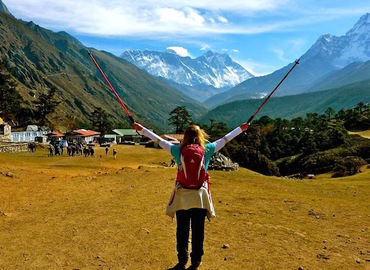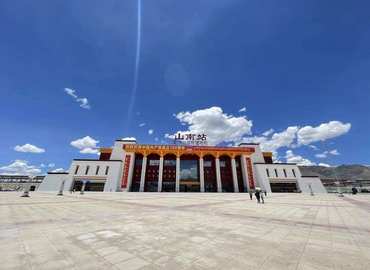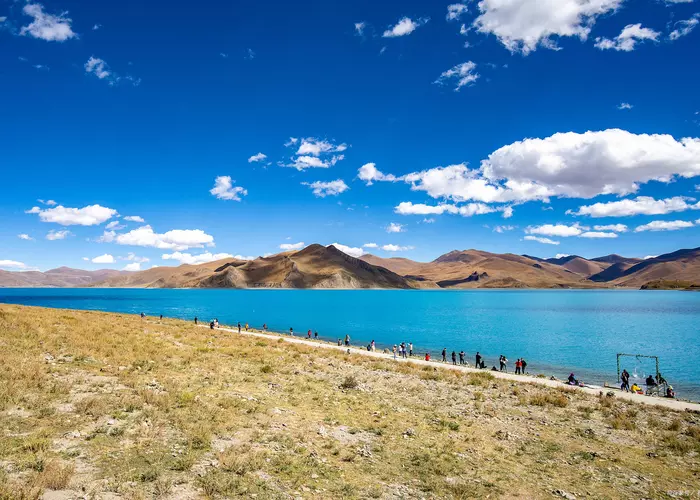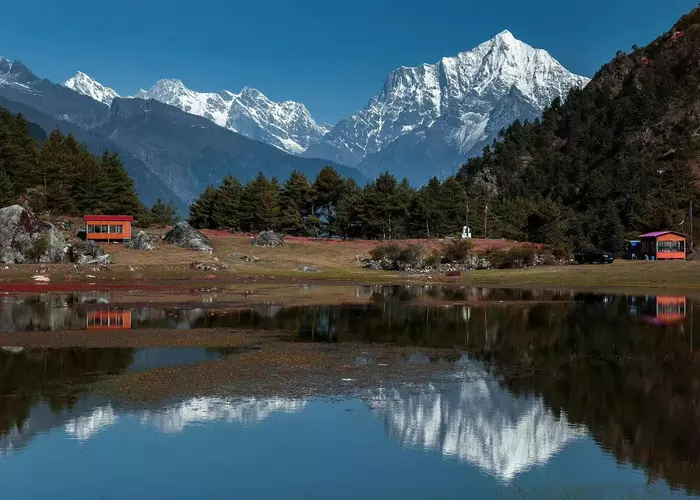Best Time to Visit Shannan
- Cherry
- Last Updated : 08/24/2023
Shannan is suitable to visit all year round. Shannan area is located in the valley of the middle reaches of the Yarlung Zangbo River. It belongs to the temperate semi-arid and semi-humid plateau monsoon climate. Shannan is a wonderland that is full of stunning mountain views, soothing lakes, and the colorful traditions and culture of Tibet. Visiting Shannan is like giving a treat to your eyes and inner soul and feeding them with unforgettable moments. To explore the gems of Shannan, you are recommended to plan your visit between May and November.
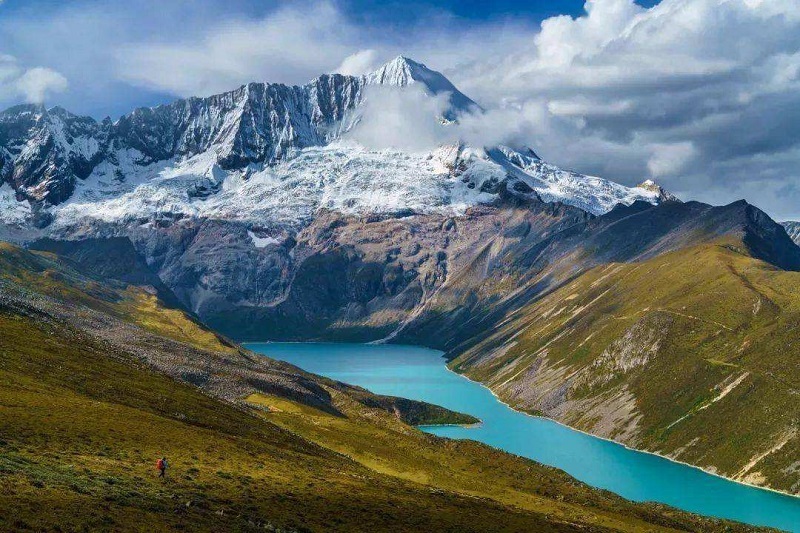
Weather Features
Comparably low temperature, small annual temperature differences, but large temperature differences between day and night.
There're four distinct seasons, with an average annual temperature of around 8°C. The temperature from June to August is the highest, but only over 20°C. The climate is relatively cool. December and January of the following year are the coldest two months. The minimum temperature is minus 10 degrees Celsius. The temperature difference between day and night is large. In general, Shannan is one of the warmer regions on the entire Tibetan Plateau.
Obvious dry and rainy seasons. It usually rains at night.
The rainy season in Tibet is from May to September. From the Nyingchi area in the southeast to the Nagri area in the northwest, the rain gradually decreases. The rainy season in Shannan is from June to August, and it usually rains at night, so the rain in Shannan will not affects the sunny day the next day. The night rain in Shannan has more impact on the road conditions. At present, most of the roads in Tibet are well-paved, therefore, the rainy season in Shannan will not affect the itinerary of ordinary tourists.
Thin air and strong solar radiation.
This is the climate characteristic of the entire Tibetan plateau. Due to the high altitude and sparse vegetation, the air here is thin and clean, with low dust and moisture content, and high transparency. When sunlight passes through the atmosphere, the loss of solar radiation energy is small, so there is sufficient sunlight and a large amount of radiation. It is the place with the largest amount of solar radiation. The annual average temperature in Shannan is 7.4°C to 8.9 °C. The summer is short and cool, the winter is long and dry, the wind is strong and frequent, the freezing time is long, the temperature difference between morning and evening is large, and the frost-free period is short.
Characteristics of Four Seasons
Spring(April to June)
The spring in Shannan is still a bit cold, with strong wind and shining sunshine. As spring comes late in Tibet, there still remain strong characteristics of winter, with an average daily temperature of about 10 °C.
Summer(July to August)
The summer in Shannan is very comfortable and cool, with an average daily temperature of about 25 °C, which is a good summer resort. 70% of the total yearly rainfall occurs in the summer season between July and August. The temperature distribution experiences a decrease from the central region to the surroundings. Although it's in the rainy season, it usually rains at night. It's still sunny during the daytime. Summer is also the peak season for tourism in Shannan.
Autumn(September to November)
In autumn, Shannan is getting colder. However, the autumn in Shannan is very short, only more than 2 months, with an average temperature of 12℃. The temperature is similar to that of spring, but the climate is drier. It's cooler in the morning and evening, and the temperature during the day is still very comfortable. The scenery of Shannan in autumn is very beautiful with the blue and transparent sky. The leaves are yellow all the way from Lhasa to Shannan, which is very amazing.
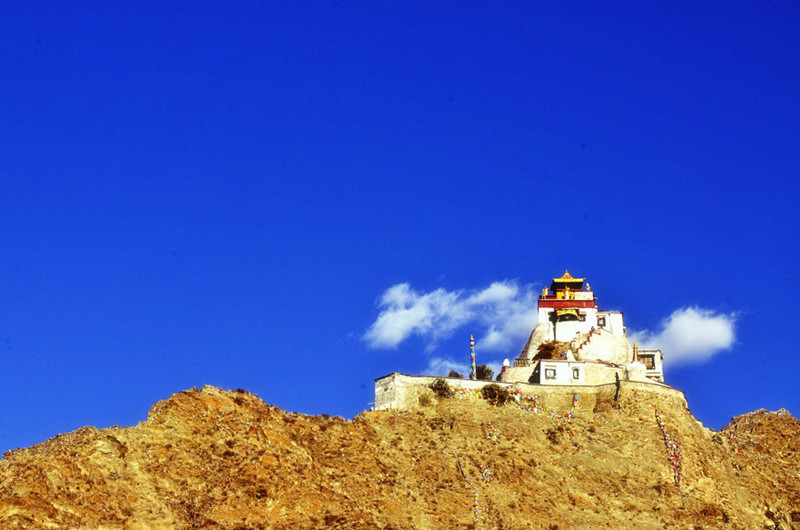
Winter(December to March)
The winter in Shannan is relatively long and a bit cold, but it is not as cold as everyone thinks, with an average temperature of about 4℃, which is even warmer than most cities in Euro in winter. There is full of sunshine, and the tourists are much fewer than in summer, and it is quieter. For experienced tourists, they prefer to visit temples in Shannan to enjoy its beauty and faith, as well as its sunshine and warmth.
Temperature Overview by Month
| Month | Jan | Feb | Mar | Apr | May | Jun |
| Average Max. Temperature | 6℃ | 9℃ | 10℃ | 14℃ | 19℃ | 20℃ |
| Average Min. Temperature | -10℃ | -7℃ | -3℃ | 1℃ | 4℃ | 8℃ |
| Month | Jul | Aug | Sep | Oct | Nov | Dec |
| Average Max. Temperature | 23℃ | 21℃ | 20℃ | 16℃ | 12℃ | 8℃ |
| Average Min. Temperature | 10℃ | 8℃ | 6℃ | 1℃ | -6℃ | -11℃ |
The Best Time to Visit Shannan
Because of the moisture and warm winds from the Indian Ocean, Shannon experiences moderate temperatures and weather. Although you can visit Shannan at any time of the year, May to November is the best time to visit. To visit the low-altitude landmarks such as Samye Monastery, Yamdrok Lake, and Yumgbulakang Palace, you can plan your trip in the winter months too.
Tips to Travel Shannan
- Plan your trip to Shannan wisely and avoid planning it during the Chinese domestic holidays because it is unbelievably overcrowded these days. The most crowded Chinese seasons are the Chinese Spring Festival, International Labor Day, and National Day.
- Shannan is a high altitude region so pack your warm clothes as well as altitude sickness medicine, so in case of altitude sickness, you already have medicine to overcome this serious issue.
Email response within 0.5~24 hours.



